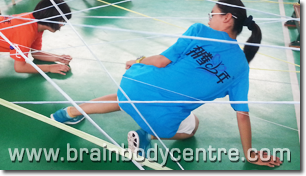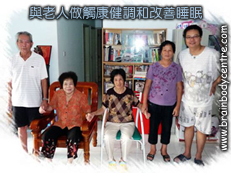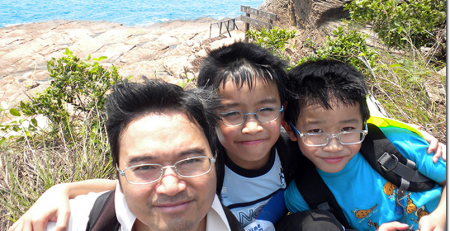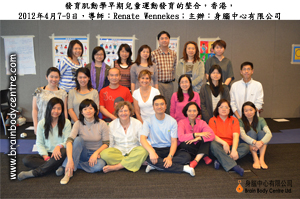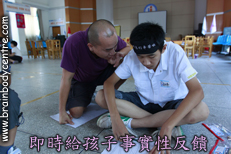The Three Dimensions, Two Directions and Sole Purpose of Learning Enhancement
Conrad Ho (Hong Kong)
Aug. 30, 2012
Every year after the graduation ceremony of the Move to Learn Camp, parents would always come to me and ask, ‘Well! The camp is good, but what and how should I do to help my kid continue to improve?’ “So, what have you been doing?” The usual answers were repeated recitations, prolonged studies, massive drills, reading reference books, studying dictionaries, listening to learning CDs, supplementary tuition, etc. Of course, all of the above-mentioned are “correct” things to do. However, I believe that they are just parts of the full story of learning enhancement. The more comprehensive and systematic learning enhancement is done, the better will be the results.
I have summarized what I understand as more comprehensive and systematic into the three dimensions, the two directions and the sole purpose for learning enhancement. While the three dimensions include the preconditions, the processes and the application of learning; the two directions refer to the inputs and outputs of information; and the sole purpose means voluntary life-long learning.
First of all, what is “learning”? Defined broadly, learning (which includes but not limited to learnings from books or at school) means new information comes into your body through the senses, is transmitted through the peripheral nervous system and eventually arrives at the central nervous system, is processed and memorized by the brain, and is retrieved from your memory to be used when applicable, so as to get results better than those that could be obtained when it was not yet learnt. Learning has always been regarded as a bilateral process in education. In school education, students attend lectures (inputs). Teachers tried to make sure the students have learnt the materials, or at least know how much they have learnt, through various means, e.g. surprise quiz, assignments, tests and examinations, etc. (outputs). Teachers would not pronounce that the students have learnt simply from their being present during lectures, because the essence of learning is not only about getting it (inputs), but also applying it later on (outputs).
It is exactly the same in the case of parenting. When the parent teaches the kid to behave in polite manners, should he stop at verbal teachings (inputs) only? Definitely not. Parents would observe their behaviours (outputs). Will they say “good morning” when meet with people in the morning? Will they say “thank you” after receiving assistance? Will they offer their seats to anyone in need on public transport? Do they respect teachers and elders? Therefore it is essential to pay balanced attention to the two directions of learning enhancement. But, have parents put appropriate weight on such an important principle?
Nowadays in Mainland China, using funny ways to memorize the meanings and pronunciations of English words is very popular in order to help children learn English well. There is no question about accumulating an extensive vocabulary in learning and speaking a language. However, for those who are using this method, are they generally speaking good English? One of the most important reasons, in my personal opinion, is that Mainland Chinese have mistaken memorizing as learning. Memory is about information input and storage, which is unidirectional. Being able to memorize does not mean you can recall; being able to recall also does not imply you can apply. Only being able to apply is the sufficient evidence for having learnt. Learning is bilateral. Improvement would be limited if memory enhancement is being mixed up with learning enhancement.
Let me introduce the Three Dimensions for learning enhancement here. The first dimension is the preconditions of learning. Learning is a luxury physiologically. It consumes plenty of blood sugar and oxygen. Your body will learn only after it has met the basic needs and still have surplus resources. There are two kinds of basic needs: (1) survival, which is considered to be threatened when there is not enough to eat, drink and wear or there are howling dogs nearby; and (2) social security, which is at risk when the person is bullied by peers, ignored by teachers or rejected by schoolmates. To raise the kid’s senses of survival and social security is the precondition to learning enhancement. Training up the physiological functions listed below would help raise them – the balancing mechanism and its functionings (the better the balancing mechanism, the person would be more awake, and would feel safer); proprioception (the sense of feeling for the lengths of muscle fibres and the angles of joints, which allows the person to tell the relative positions of every parts of the body and the location of the whole body in space without seeing; would result in a better sense of safety due to having better knowledge of one¡¦s own situation with better proprioception); kinaesthesia (involving fine motor, gross motor and core-muscle coordination; better control over one’s body movements would result in a better sense of safety); competitive and cooperative games (better social skills will bring better social security); sharing moments in self-appreciation and appreciation of others (better social harmony also promotes better social security).
The second dimension is the learning process, which in simplified terms can be differentiated into three parts – perception, processing and expression. Perception is sensing it to know it. Thus, it involves sensory inputs as well as initial filtering for useful information by the brain. Processing are basically analysing, feeling for emotions aroused, further filtering, making inferences and associations, reorganizing, integrating and memorizing. Expression is coordinating nervous and muscular activities for information output, for example, fine motor coordination of verbal, written and facial expressions, gross motor coordination of body language expressions, and core-muscle coordination of postural expressions. Training up the physiological functions listed below would help facilitate the learning process – fine motor, gross motor and core-muscle coordination (to position your senses in order to better receive incoming information; to move the muscles of the face, the fingers and the vocal cord in order to better express); cardio-pulmonary functioning (to better supply blood sugar and oxygen to the nervous system); expressive arts (including drawing, sculpturing, music, drama, literature, etc, which by themselves are expressive activities, and at the same time, can directly enhance the core thinking process involving emotions, associations, reorganizations and integrations); and whole-brain operations (involving all whole-body movements to activate the whole brain, requiring balanced operations in left and right, up and down, front and back sides of the body).
Finally, the third dimension is the application of learning, meaning what for and what advantages. People learn, basically for solving problems, pursuing dreams, and obtaining any spill-over and secondary advantages (e.g. people’s admiration and promotion of self-confidence, etc.). Therefore, when teachers use experiential ways for learners to directly feel the actual uses of what is taught, the learners would be motivated to spontaneously learn, without being encouraged or compelled. I had to study Chinese and World History in secondary school. The teachers did introduce what the actual uses of studying history might be, which was to have the past as reference to manage the present better. However, there was no personal connection at all to me, since I was not a governing official nor a ruling king, just a humble secondary student. Such a reason offered me no motivation to study history. Now, being a trainer in learning enhancement, I have great interests in the history of scientific researches and breakthroughs of how neuroscientists have understood brain operations, how anthropologists have tracked brain evolution, and how physiologists have discovered brain structures and functionings. I can effortlessly memorize the facts as if they come to reside in my memory on their own. Expose the learners in experiential learning processes. Do not just discuss without action, nor just think without experimenting. This can help build a personal connection with what have learnt, which naturally breeds the motivation to learn.
The last and the most important topic is the sole purpose of learning enhancement, which is to promote voluntary life-long learning. In this ever-changing modern society, parents use the carrot and the stick to propel children to learn well what the former consider to be “the best” to the latter. However, who can be sure “these bests” are still useful when their children have grown up and begun their working life? In the past decade, there was a serious structural unemployment in Hong Kong, which featured the existence of both jobless citizens and untaken jobs at the same time. The highest unemployment rate had once reached over twenty percent in the age segment of early adulthood, the late teens and the twenties. These young people did want to be employed. Some of them had education and training related to industries, but the majority of industries had already left Hong Kong before their graduation. Hence, there were not enough job offers to choose from.
To avoid this kind of mismatch, the idea of voluntary life-long learning is now getting more and more popular in the education sector. Only the person himself has the most authority to say what he really wants and what the best is for him. How to help kids find these out? For the teacher, it is straight-forward: let them go so that they may experience and try. Practice makes perfect. For the learner, the principle is simple: learn to enjoy the process and own the result. The learner would have the motivation to continued learning only when he enjoys the process, eventually leading to life-long learning. The learner would choose to make himself responsible for the learning results, i.e. own them, only when he learns voluntarily without being compelled. Therefore, with prolonged exposure to the process of voluntary experiential learning, the learner would be able to learn ways and actions to promote learning motivation for himself.
The above-mentioned is crystallized after years of designing and leading the Move to Learn Camp. Trust that they would become materials that spark inspirations to the readers and parents, facilitating them to see the details as well as the big picture during the process of learning enhancement, eventually, enabling them to take care of kids¡¦ learning in a more comprehensive and systematic way.


